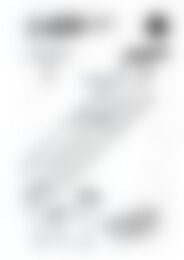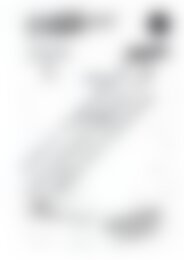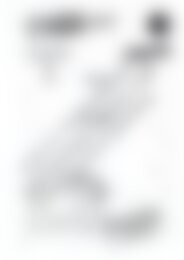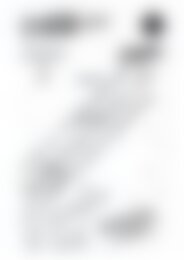NZ-5126 Teaching Comp Strategies (Book F)
You also want an ePaper? Increase the reach of your titles
YUMPU automatically turns print PDFs into web optimized ePapers that Google loves.
Finding similarities and differences – 1<br />
To help you understand what you read in text, you sometimes need to think about how things are alike or how they<br />
are different and to make comparisons.<br />
Read the report.<br />
The echidna and the platypus<br />
1.<br />
7.<br />
8.<br />
9.<br />
10.<br />
11.<br />
A mammal is an animal with a backbone (vertebrate) that, when young, suckles milk from its mother.<br />
The platypus and the echidna are Australian mammals. Read on to find out more about these interesting<br />
creatures.<br />
Platypus<br />
The platypus divides its time between water and land.<br />
It uses webbed front feet to propel itself through water<br />
and its back feet to steer and as brakes. The webbing<br />
cleverly folds back so the platypus is able to walk (or<br />
waddle) on land.<br />
The platypus is covered in fur and has a rubbery bill<br />
(resembling a duck’s beak) with extra-sensitive nerves in<br />
it to help the animal feel its way around and find food. The<br />
platypus feeds by using its claws to dig in stream and river beds.<br />
Although it has toothless jaws, it eats small shrimp, insect larvae and<br />
freshwater crayfish.<br />
When a male platypus becomes an adult, it uses spurs on the inside of each<br />
hind leg to defend itself from predators. Venom from the spur is released when the platypus feels<br />
threatened.<br />
The platypus is a special type of mammal—a monotreme. A monotreme is unlike other mammals as<br />
it does not give birth to live young. Instead, the female lays soft-shelled eggs (usually two at a time).<br />
After 10 days, the platypus hatches and is held close to the mother by her large tail and suckles on<br />
milk from her stomach. The offspring leave the safety of the burrow when they are about 17 weeks old.<br />
Many Australians may have never seen a platypus in the wild, but they probably touch one every day—<br />
on their 20 cent coin!<br />
Echidna<br />
An echidna is covered with coarse hair and spines. It has a long snout that acts as a mouth and nose,<br />
and is used to pound down large prey to a smaller size for eating. The snout is<br />
very sensitive and can feel vibrations, which helps the echidna discover the<br />
ant hills and logs where it feeds. Its long, sticky tongue flicks in and out of<br />
narrow holes to collect ants and termites.<br />
With short limbs and large, sharp claws, an echidna is a powerful digger.<br />
The front claws are used for digging and the rear ones for grooming.<br />
An echidna is a monotreme (a special type of mammal). The female lays<br />
one soft-shelled egg that is deposited straight into her pouch. Ten days<br />
later, the young echidna, called a puggle, hatches and suckles milk from<br />
the mother. The echidna is moved from the pouch to its own burrow.<br />
Spines appear at about 50 days old. The mother returns to feed it until it is<br />
seven months old and can leave the burrow.<br />
The echidna’s spines help to protect it from predators. They are the most<br />
effective when the echidna rolls into a ball, which it does when it feels threatened.<br />
Echidnas are usually found in bushland and are sometimes spotted by people when they try to cross<br />
a country road. You can see an echidna on the Australian 5 cent coin!<br />
2.<br />
3.<br />
4.<br />
5.<br />
6.<br />
<strong>Teaching</strong> comprehension strategies 34 www.ricpublications.co.nz ~ R.I.C. Publications ®<br />
ISBN 978-1-925431-24-7

















